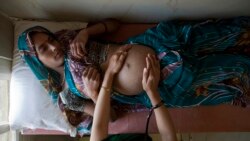Last summer, the governments of the United States, Ethiopia and India, along with the United Nations Children’s Fund, or UNICEF, cohosted in Washington, DC the “Child Survival Call to Action” conference, a global push to reduce the number of preventable deaths of children under the age of 5.
That first meeting yielded a roadmap for a sustained, global effort to lower child mortality rates, especially in high-risk countries, and a pledge to work towards eliminating preventable child deaths. Since then, some 165 countries have pledged to increase their efforts to end preventable child deaths. Private sector, faith-based organizations, and civil society have also signed the pledge and are mobilizing their resources to address the challenge.
Nearly 30 years ago, the United States Agency for International Development (USAID), and UNICEF, with the support of the U.S. Congress, launched a “child survival revolution” aimed at reducing the number of deaths among young children in developing countries. At the time, an estimated 15 million children under age 5 in the developing world died from common preventable diseases each year. Without reduced rates of mortality, the number of deaths today would be about 17 million each year.
“The highest rates of death are now overwhelmingly in fragile states and conflict-affected countries and regions,” said UNICEF Representative to Ethiopia, Dr. Peter Salama.
Dramatic reductions in preventable child deaths can be achieved through concerted action in five critical areas, outlined in the global roadmap: geographical focus, high burden populations, high impact solutions, gender equality, and mutual accountability and financing.
“By working hand in hand, we can and we will end all preventable maternal, newborn and child deaths, and thus complete the work begun under the child survival revolution.”
To this end, in late January, Ethiopia hosted a follow-up conference, the African Leadership on Child Survival – A Promise Renewed. This time, ministers of health and experts from across Africa met to discuss progress and strategies to lower child mortality across Africa. India also hosted follow-up conference in January, Child Survival Call to Action and Development, where it launched a new Reproductive Maternal Newborn Child Health and Adolescents strategy.
The United States is committed to the goal of ensuring that every child everywhere has the same chance to reach his or her fifth birthday.
“The work you are doing will continue when you return to your capital cities,” said USAID Administrator Dr. Rajiv Shah to the Conference participants. “And USAID stands ready to support you."
That first meeting yielded a roadmap for a sustained, global effort to lower child mortality rates, especially in high-risk countries, and a pledge to work towards eliminating preventable child deaths. Since then, some 165 countries have pledged to increase their efforts to end preventable child deaths. Private sector, faith-based organizations, and civil society have also signed the pledge and are mobilizing their resources to address the challenge.
Nearly 30 years ago, the United States Agency for International Development (USAID), and UNICEF, with the support of the U.S. Congress, launched a “child survival revolution” aimed at reducing the number of deaths among young children in developing countries. At the time, an estimated 15 million children under age 5 in the developing world died from common preventable diseases each year. Without reduced rates of mortality, the number of deaths today would be about 17 million each year.
“The highest rates of death are now overwhelmingly in fragile states and conflict-affected countries and regions,” said UNICEF Representative to Ethiopia, Dr. Peter Salama.
Dramatic reductions in preventable child deaths can be achieved through concerted action in five critical areas, outlined in the global roadmap: geographical focus, high burden populations, high impact solutions, gender equality, and mutual accountability and financing.
“By working hand in hand, we can and we will end all preventable maternal, newborn and child deaths, and thus complete the work begun under the child survival revolution.”
To this end, in late January, Ethiopia hosted a follow-up conference, the African Leadership on Child Survival – A Promise Renewed. This time, ministers of health and experts from across Africa met to discuss progress and strategies to lower child mortality across Africa. India also hosted follow-up conference in January, Child Survival Call to Action and Development, where it launched a new Reproductive Maternal Newborn Child Health and Adolescents strategy.
The United States is committed to the goal of ensuring that every child everywhere has the same chance to reach his or her fifth birthday.
“The work you are doing will continue when you return to your capital cities,” said USAID Administrator Dr. Rajiv Shah to the Conference participants. “And USAID stands ready to support you."


















